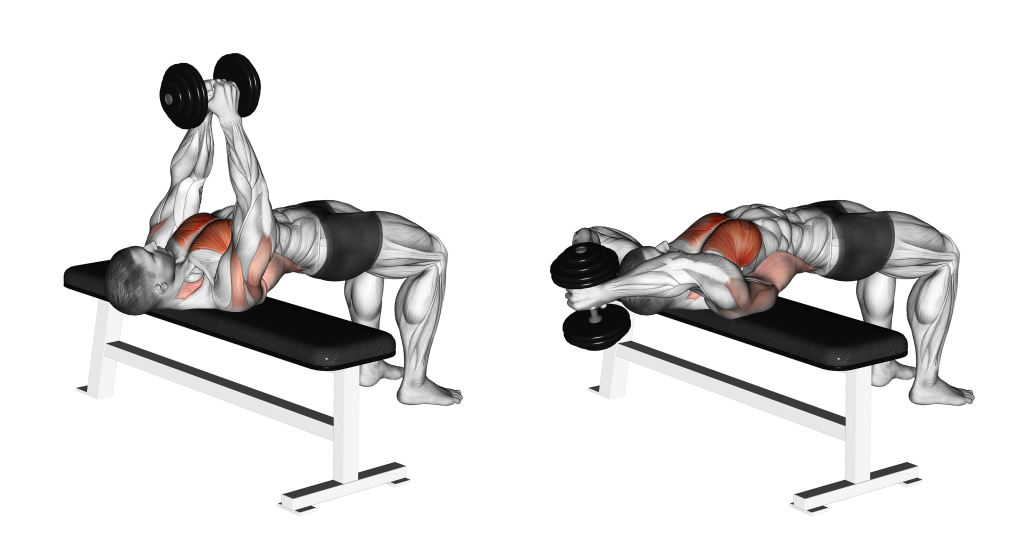Doing barbell bench presses may not work your chest optimally, unless you hit the genetic lottery and everything works wonders for you. For most lifters out there, the barbell bench press is not a chest exercise at all, rather a deltoid or a triceps exercise.
This is because the chest muscles (pectorals) have a whole lot of functions and when you do barbell bench presses they can choose between transverse flexion or transverse adduction movements.
These two movements seem similar, but they’re not the same since they are very much differentiated by the position of your elbows when you perform them. Both of these movements make your upper arm move upwards to lift the weight towards the middle portion of the body in a horizontal fashion like with a dumbbell flye.
When you use a barbell to do this, your upper arm doesn’t have as many options in lifting the weight upwards because it’s essentially a bar, which means that only the first third of the entire exercise has any semblance of transverse flexion and adduction.
Since the pectoral muscles don’t lift the weight themselves while you’re doing presses, they’ll find their action in the first third of the entire exercise. After that third, your pectorals are pretty much just fixator muscles that give you more isometric tension.
This means that yes, they’ll still be useful but they won’t give you the desired results. There is, of course, a way to make barbell bench presses better and more effective at their task which is to bolster your chest, but it requires improper form and doing the presses unsafely. You can do this by pushing your elbows out of their socket meaning that they will protrude forward when you get to the top of the movement.
This will provide a little bit of extra transverse flexion and adduction, but you’ll still mostly get some scapular abduction, if your shoulders don’t wreck themselves in the process. This is risky, don’t try it.
So What Should You Do?
That’s right, use dumbbells instead of a barbell to bench press. It’s a far better alternative if performed correctly, which means you have to be very careful. Dumbbells have a much bigger motion spectrum than a barbell because you can use them to go all the way down instead of having them stop at chest level because a bar is in the way.
When you have a greater range of motion while doing presses, you can activate your pectoral muscles far more because you can boost your transverse flexion and adduction movement which happens when you start lifting.

Also, when you’re doing dumbbell bench presses, try to press your movement inwards, as if you were doing a flye. Make sure that your dumbbells don’t touch each other when you bring them to the top of the movement, but they will need to be as close as possible to make the exercise effective.
This means that when you do dumbbell bench presses correctly, you will achieve more loaded transverse adduction and flexion, which means the exercise will simply do more for you.
If you want your pectoral muscles to look like the guns that they could be, always follow the rules and tips of experienced weightlifters that worked for years, even decades on their bodies.
What Should You Avoid?
I’ve seen a lot of people use dumbbells incorrectly and it’s hurting their workout. In order to avoid this, make sure that you’re not actually shortening your range of motion with dumbbells instead of extending it. It might be because of ego fragility or because the bar, as an indicator of movement and location, is removed from the equation.
Weightlifters will make use of the weight plates on the ends of the dumbbell to be able to tell when to stop lowering their weight, which leads them to misjudge and stop way too early, when the edge of the dumbbell starts reaching their shoulder.
This is wrong since you’re basically shortening the motion by a few inches, so drop those dumbbell bench presses all the way down – you need them lower than your chest and you won’t get results otherwise. Always get the best out of your exercise.
